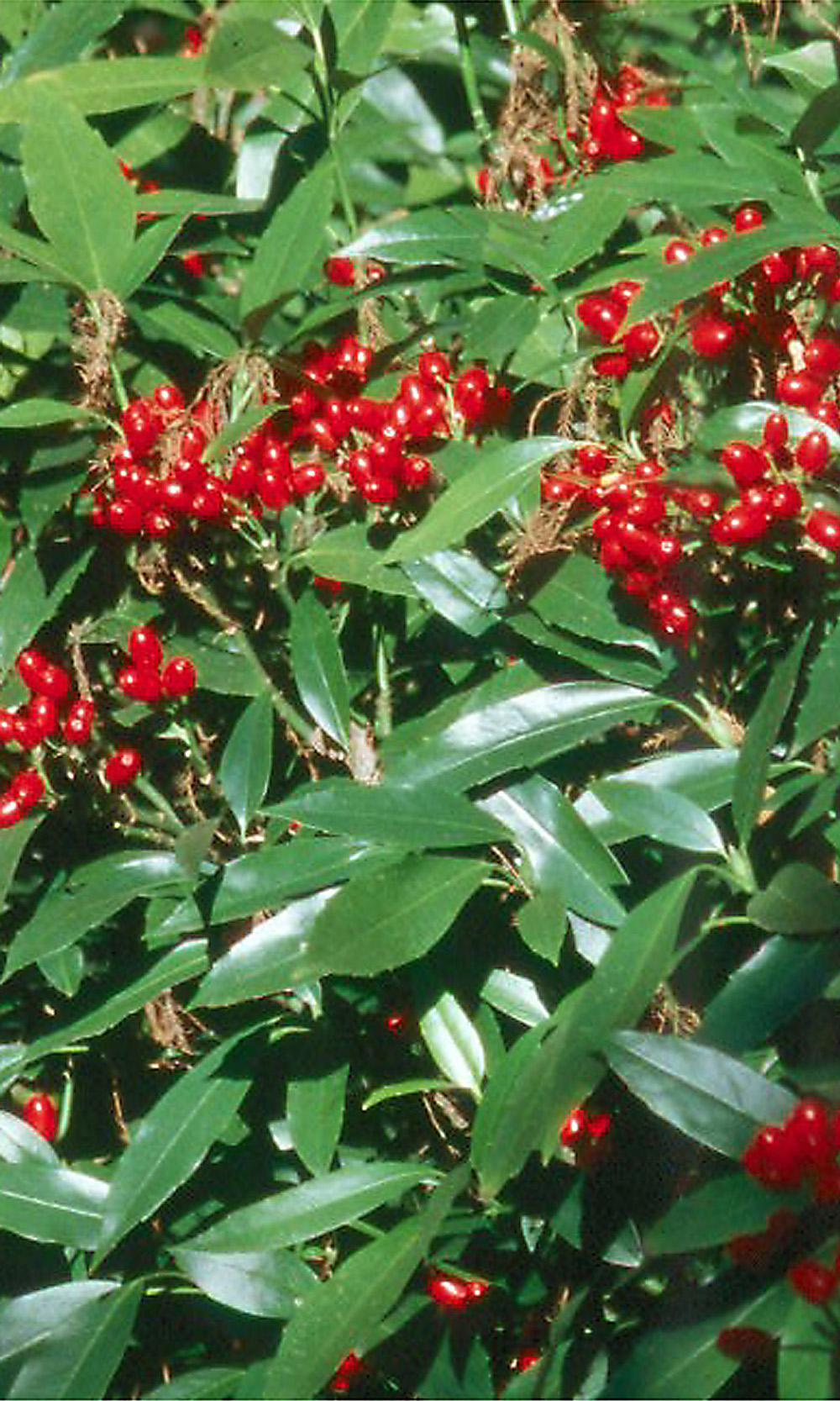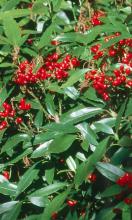Information Possibly Outdated
The information presented on this page was originally released on January 28, 2002. It may not be outdated, but please search our site for more current information. If you plan to quote or reference this information in a publication, please check with the Extension specialist or author before proceeding.
"Birds and Bees" and the garden
By Norman Winter
MSU Horticulturist
Central Mississippi Research & Extension Center
To be perfectly honest, sometimes there needs to be a little more sex in the garden. Yes, gardeners, we need to discuss the "birds and the bees."
We cannot escape the challenge of male and female relationships, even in the garden. This is most evident in the large, bright red fruit on the aucuba. Well, you didn't think I was talking about human relationships, did you?
If you are wondering why your aucubas do not have red fruit, then that's were the sex discussion begins. You see, Canadian geese mate for life and aucubas do, too! I suppose the male aucuba doesn't really pick out one particular female aucuba, but he really spreads his love around.
If you are catching on now, you realize that there are male and female varieties of aucuba, and both must be in the garden to get the prized red, winter fruit.
The aucuba is one of the best shrubs for the South, even though it comes from the Himalayas and Japan. Many of you will find it strange to know they are in the dogwood family. The variegated forms brighten up the shade garden better than almost any other shrub. They are almost as pretty as the tropical croton, and actually there is a variety called crotonifolia.
There are also green-leafed types. Though there are variegated females that will produce the large red fruit, I am partial to the look produced by the huge, colorful fruit up against a backdrop of deep green. They almost look artificial.
Place your aucuba plant in partial shade to shade; they abhor full sun. Prepare the soil by incorporating 3 to 4 inches of organic matter, and two pounds of a 5-10-5 fertilizer per 100 square feet of planting area, tilling deeply.
Dig the planting hole three to five times as wide as the rootball but no deeper. When you dig these large holes, you are opening the door to the fastest root expansion and establishment in your bed. Place the plant in the hole and backfill with soil to two-thirds the depth. Tamp the soil and water to settle, add the remaining backfill, repeat the process and apply mulch.
Moisture is critical the first year on newly planted shrubs, so water deeply when required. Feed four weeks after transplanting with a slow-released fertilizer like an 8-8-8 or 12-6-6 at one pound per 100 square feet of bed space. Fertilize established plantings in March.
Prune lightly anytime to shape and keep bushy. To generate new canes, remove older ones near the base during the late winter. Occasionally, mealy bugs can be a problem so treat as needed, but don't let this deter you from planting some.
Try planting aucubas boldly in groups around fatsia for a tropical look. I have seen green types with the fruit grown very effectively near camellias like Professor Charles S. Sergeant that has dark-red, anemone-type blossoms. Bedding plants work quite well as companions. Grow lilac-colored impatiens in front of the more brightly variegated forms.
If indeed you want the winter landscape-enhancing red fruit, then variety selection is critical. Unfortunately, many aucubas are sold generically, but there are about 25 varieties in the trade. This means it is possible for your favorite garden center to locate male and female varieties for you if they don't have them already.
Some of the best-known variegated female varieties are Crotonifolia (male by this name also listed), Variegata, Nana (compact), Picturata and Gold Spot. Green female varieties are Hillieri, Rozannie (said to be self fertile), Salicifolia and Serratifolia.
Male variegated forms are Maculata, Mr. Gold Strike and Gold King. Green male types are Augustifolia and Crassifolia.
As you can tell by the varieties, it may still be difficult to accomplish the task even if you don't purchase generically. Talk to your nurseryman about your goals with not only the aucubas, but also your landscape in general.
Think of it this way: by planning, you are acting like a dating service, and thus your winter landscape will become much more colorful with bright red berries in the years to come.



